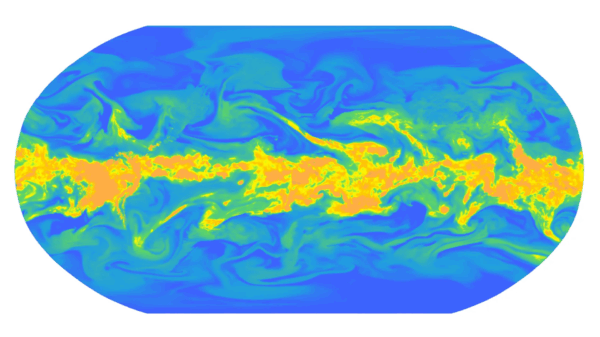Google DeepMind (NASDAQ: GOOGL) has introduced WeatherNext 2, its most sophisticated AI weather model to date, aimed at significantly improving the speed and accuracy of global weather forecasting. This advancement builds on earlier AI initiatives such as GraphCast and GenCast and carries immediate implications across various sectors, particularly for energy traders who depend on precise weather data for strategic planning. The model can produce hundreds of physically realistic weather scenarios in under a minute on a single Tensor Processing Unit (TPU), marking a significant improvement in forecasting capabilities.
WeatherNext 2 leverages a novel approach called the Functional Generative Network (FGN). This method involves strategically injecting “noise” into the model to produce a diverse range of plausible weather outcomes, resulting in enhanced predictions for complex, interrelated weather systems. The model generates four six-hour forecasts daily, using the latest global weather data as input. Impressively, WeatherNext 2 delivers forecasts eight times faster than its predecessors, excelling across 99.9% of variables—including temperature, wind, and humidity—over lead times ranging from 0 to 15 days. It provides forecasts with one-hour resolution and showcases superior skill in predicting extreme weather events, having matched or even outperformed traditional supercomputer models and human-generated forecasts during its inaugural hurricane season.
Impact on the Energy Trading Sector
The launch of WeatherNext 2 is set to reshape market dynamics, particularly within the energy trading sector. Its unparalleled speed and accuracy offer traders a new tool to navigate the complexities of energy markets influenced by fluctuating weather conditions. With forecasts delivered eight times faster than earlier models, traders can now anticipate market shifts more effectively. The capability to generate forecasts with up to one-hour resolution enables them to manage demand volatility and supply uncertainty better.
Energy trading firms, including industry giants like BP (NYSE: BP), Shell (NYSE: SHEL), and various independent entities, stand to gain immensely. Enhanced temperature predictions directly affect electricity demand for heating and cooling, while accurate wind forecasts are critical for predicting renewable energy generation from wind farms. With improved foresight, traders can optimize bids and manage their positions more strategically, strengthening load balancing and grid stability across utilities. Even energy-intensive sectors, such as Google’s own data centers, can optimize operations by aligning energy usage with periods of lower costs or higher renewable availability.
See also New Zealand Authors Disqualified for AI-Created Book Covers at Ockham Awards
New Zealand Authors Disqualified for AI-Created Book Covers at Ockham AwardsThe competitive landscape for weather intelligence is heating up. While WeatherNext 2 offers a cutting-edge solution, other companies like Climavision, Tomorrow.io, and The Weather Company (an IBM subsidiary, NYSE: IBM) are also developing advanced AI forecasting systems. WeatherNext 2’s deployment through Google Cloud’s Vertex AI, BigQuery, and Earth Engine democratizes access to sophisticated forecasting tools, leveling the playing field for smaller firms and fostering innovation in energy analytics.
Broader Implications for AI and Meteorology
The inception of WeatherNext 2 signals a transformative shift in the broader AI landscape, specifically in the realm of data-driven meteorology. This model embodies several advancing trends in AI, including the increasing reliance on machine learning techniques and the expanding role of generative AI in scientific domains. Its FGN method not only exemplifies the capabilities of generative AI but also enhances climate modeling and predictions vital for various sectors.
WeatherNext 2 has demonstrated significant improvements, achieving up to a 20% reduction in prediction errors for precipitation and temperature forecasts compared to 2023 models. Its hyper-local predictions, which can reach down to 1-kilometer grids, provide meteorologists with unprecedented detail and speed. Experts, including Kirstine Dale from the Met Office, regard this as a “real step change” in weather prediction, akin to the introduction of computers in the forecasting field.
However, the advancement is not without challenges. The model’s reliance on historical data raises questions about its adaptability in the face of rapidly changing climate patterns. Ethical considerations regarding equitable access to forecasting tools are also paramount, especially for developing regions vulnerable to climate disasters. As WeatherNext 2 captures significant attention, addressing these complexities will be vital for harnessing its full potential.
In conclusion, WeatherNext 2 from Google DeepMind marks a pivotal moment in understanding and forecasting weather patterns. Its implications extend beyond immediate forecasting capabilities; they promise profound transformations in sectors from energy trading to agriculture and disaster management. As this advanced model becomes operational across various platforms, it is poised to redefine the standards for weather intelligence in the AI era.







































































